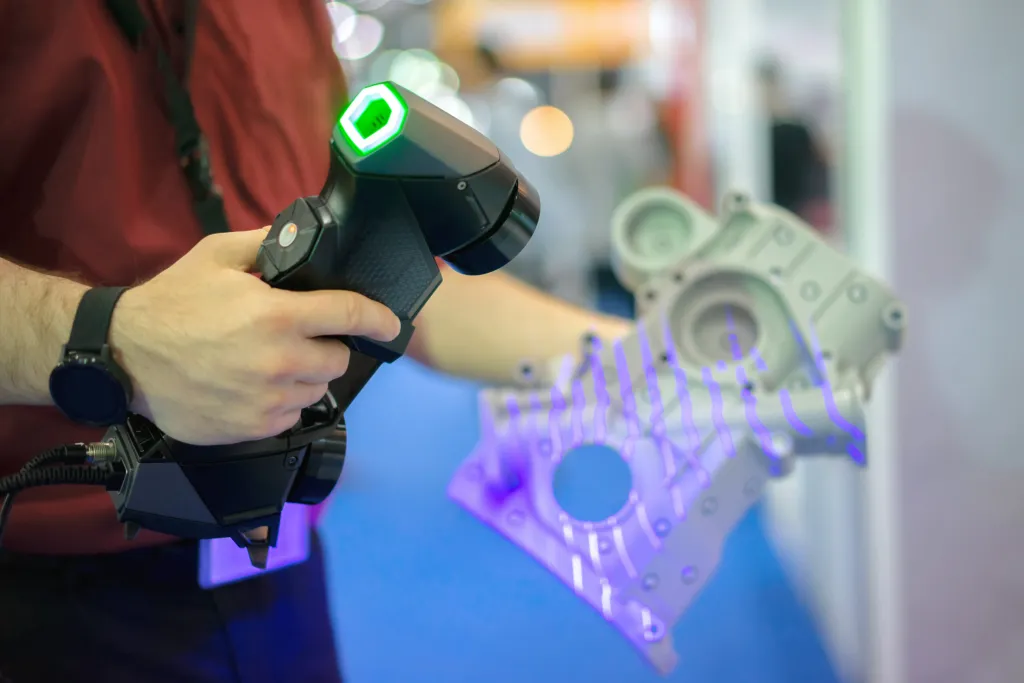Revolutionizing Manufacturing: How 3D Scanning Enhances Precision and Efficiency
In today’s rapidly evolving industrial landscape, the need for precision and efficiency has never been greater. As manufacturers strive to stay competitive and innovative, technologies like 3D scanning are becoming integral to their operations. Pro-Tech Systems Group (PTSG), a leader in industrial solutions, leverages 3D scanning to enhance manufacturing processes, ensuring unparalleled accuracy and operational efficiency. This blog explores the transformative impact of 3D scanning on manufacturing and how Pro-Tech’s expertise is driving this change.
Understanding 3D Scanning Technology
3D scanning is a process of capturing the physical dimensions and properties of objects in a digital format. Using lasers, structured light, or photogrammetry, 3D scanners create detailed models that can be manipulated and analyzed in a virtual environment. This technology is pivotal in bridging the gap between the physical and digital worlds, allowing manufacturers to work with highly accurate representations of real-world objects.

Enhancing 3D Scanning Technology Precision in Manufacturing
Precision is crucial in manufacturing, where even the smallest deviation can lead to significant problems. 3D scanning technology ensures that every component and product meets exact specifications, reducing the margin of error to near zero. Here’s how:
1. Detailed Measurements:
Traditional measurement tools often fall short in capturing complex geometries and intricate details. 3D scanners provide high-resolution data that includes even the minutest features of an object, ensuring comprehensive and precise measurements.
2. Quality Control:
During the production process, 3D scanning can be used to compare manufactured parts against original designs. This real-time quality control helps in identifying deviations early, allowing for immediate corrections and maintaining high-quality standards.
3. Reverse Engineering:
For existing parts with no digital blueprints, 3D scanning facilitates reverse engineering. By scanning an existing component, manufacturers can create an accurate digital model to reproduce or improve upon the design, ensuring compatibility and performance.
Boosting Efficiency in Manufacturing Processes
Efficiency in manufacturing translates to reduced costs, faster production times, and higher throughput. 3D scanning contributes to operational efficiency in several ways:
1. Rapid Prototyping:
3D scanning accelerates the prototyping phase by quickly generating digital models for testing and validation. This rapid feedback loop shortens development cycles, enabling faster time-to-market for new products.
2. Streamlined Workflows:
By integrating 3D scanning into existing workflows, manufacturers can automate various stages of production, from initial design to final inspection. This streamlining reduces manual intervention, minimizes errors, and speeds up the overall process.
3. Resource Optimization:
3D scanning helps in optimizing material usage by providing precise data for machining and assembly. This reduces waste and ensures that resources are used efficiently, contributing to cost savings and sustainability.

Real-World Applications of 3D Scanning Technology in Manufacturing
Pro-Tech’s 3D scanning technology has revolutionized the manufacturing processes of several clients across various sectors:
1. Automated Material Handling Systems:
In material handling, precision is essential for the safe and efficient movement of goods. Pro-Tech’s 3D scanning ensures that automated systems are precisely calibrated, minimizing the risk of errors and enhancing operational efficiency.
2. Control Systems:
Pro-Tech uses 3D scanning to ensure the accuracy and reliability of control systems. By scanning components and systems, Pro-Tech can identify potential issues before they arise, ensuring smooth and efficient operation.
3. SCADA Systems:
In the development and maintenance of SCADA systems, Pro-Tech employs 3D scanning to create accurate digital models of physical infrastructure. This allows for more precise monitoring and control, reducing downtime and increasing efficiency.
4. Water and Wastewater Treatment Facilities:
For water and wastewater treatment facilities, 3D scanning is used to ensure the precise installation and maintenance of equipment. This helps in optimizing the treatment processes and improving the overall efficiency of the facility.
Pro-Tech’s Expertise in 3D Scanning Technology

1. Customized Solutions:
At Pro-Tech, we understand that every manufacturing process is unique. Our team of experts works closely with clients to develop customized 3D scanning solutions that integrate seamlessly with their operations, addressing specific challenges and objectives.
2. State-of-the-Art Equipment:
We invest in the latest 3D scanning equipment to provide our clients with the most accurate and reliable data. Our advanced scanners capture high-resolution images and measurements, ensuring precision in every project.
3. Comprehensive Support:
From initial consultation to implementation and beyond, Pro-Tech offers comprehensive support to ensure the success of our 3D scanning solutions. Our experts provide training, maintenance, and ongoing assistance, helping clients maximize their investment.
Future Prospects of 3D Scanning in Manufacturing
The future of 3D scanning in manufacturing looks promising, with advancements in technology set to enhance its capabilities further. Innovations such as AI-driven analysis, real-time scanning, and integration with other Industry 4.0 technologies will continue to push the boundaries of what’s possible.
Pro-Tech remains at the forefront of this technological evolution, continually adapting our solutions to incorporate the latest advancements. Our commitment to innovation ensures that our clients stay ahead of the curve, leveraging 3D scanning to drive their manufacturing processes into the future.
3D scanning technology is revolutionizing manufacturing by enhancing precision and efficiency across various industries. Pro-Tech’s expertise in implementing tailored 3D scanning solutions ensures that businesses can unlock the full potential of this technology. By embracing 3D scanning technology, manufacturers can achieve higher quality, faster production times, and significant cost savings, positioning themselves for success in a competitive market.
With Pro-Tech as your partner, you can confidently navigate the complexities of modern manufacturing, harnessing the power of 3D scanning to drive innovation and excellence in your operations. Contact us today to learn more about how our 3D scanning solutions can transform your manufacturing processes.




